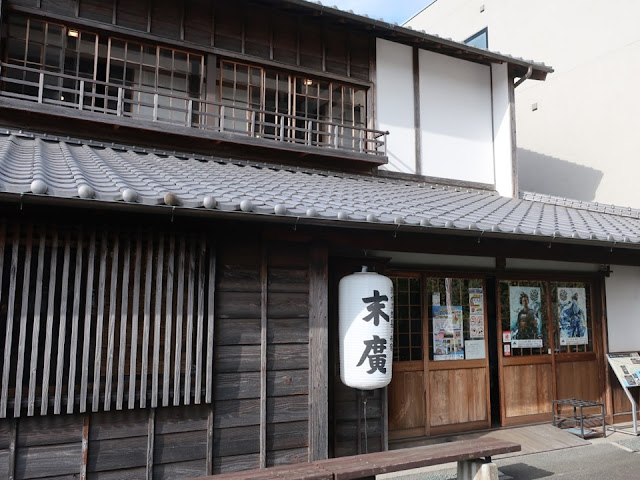The seamen’s inn was established by Shimizu Jirocho (1820-1893) who every Japanese knows. He was a respected gangster and became the hero of stories, movies and so on. He died at the inn. More than three thousand people came to attend his funeral. The building was rebuilt but the original components are reused.
The doll of Jirocho in a travelling outfit stands in front of the exhibits. The photo on the lower left is an actual Jirocho.
旅姿の次郎長の後ろにゆかりの品々が展示されています。左下が次郎長本人の写真です。
He had very strong and reliable followers, so they were called Jirocho Family.
街道を仕切った次郎長一家の面々。子分は大政小政に森の石松です。
On the second floor, there is a model of an English school. He understood the importance of English in his later years. So, he invited English teachers and established the school. He was also a social entrepreneur.
二階の人形は、英語学校。晩年の次郎長は英語の必要性を感じ、教師を招いて英語学校を開きました。社会事業家ですね。
He was born in the house above which is in the same city.
近くに、次郎長の生家が残っています。
Visited in February, 2023
Official website: https://www.city.shizuoka.lg.jp/000_007146.html
(in Japanese) accessed in July, 2023
Previous post (post town near the museum): Ex-village head’s house in Yui post
town、由比宿の小池邸
Next post (museum in the same prefecture): Yaizu City Museum of History and Folklore、焼津市歴史民俗資料館






Comments
Post a Comment